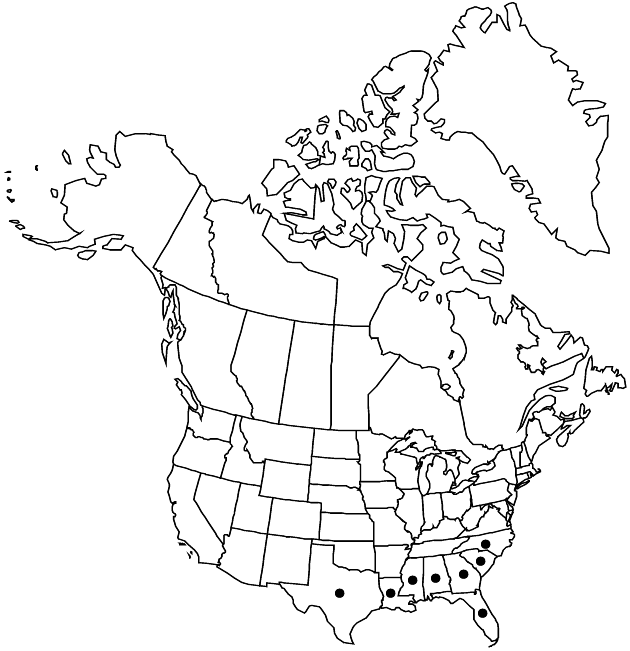Arnoglossum ovatum
Phytologia 28: 294. 1974.
Plants 50–300 cm (weakly rhizomatous). Stems round. Basal leaves: blades ovate to narrowly lanceolate or lance-linear, to 30+ cm, margins usually entire. Cauline leaves: proximal petiolate, ovate to narrowly lanceolate or lance-linear, margins usually entire; distal sessile, smaller. Involucres 8–10 mm. Phyllaries (± purple-tinged) lanceovate, midveins not winged (tips acute to acuminate, papillate). Corollas usually white or greenish, rarely purplish, 8–9 (–10) mm. Cypselae fusiform or clavate, 4–5 mm (dark-brown, 7–8-ribbed); pappi (5–) 6–7.5 mm. 2n = 50, 52, 56.
Phenology: Flowering (May–)Aug–Oct(–Dec).
Habitat: Wet, sandy woods, lowlands, savannas, roadsides
Elevation: 0–300 m
Distribution

Ala., Fla., Ga., La., Miss., N.C., S.C., Tex.
Discussion
Arnoglossum ovatum is the most variable species in the genus (as implied by synonymy). Extreme forms (very narrow-leaved, e.g., Cacalia lanceolata form, and broadly ovate-leaved forms) look very distinctive; intergradations occur. Differences could be because of dysploid chromosome races, variances in habitat, or some unknown factors.
Selected References
None.